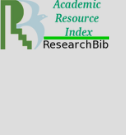Assessment of Antibiotic-Resistant Bacterial Contamination in Diverse Drinking Water Sources: Implications for Water Safety and AMR Control Strategies
Keywords:
Antimicrobial resistance, Contamination, Drinking water, Multidrug-resistant bacteria, Waterborne pathogensAbstract
Background: Antimicrobial resistance (AMR) poses a significant global public health threat, particularly through environmental routes like drinking water. In low- and middle-income countries, contamination of water sources with antibiotic-resistant bacteria (ARB) is exacerbated by inadequate sanitation and unregulated antibiotic use.
Objective: To assess the prevalence and antibiotic resistance profiles of bacteria in various drinking water sources in Lahore, Pakistan.
Methods: A cross-sectional study was conducted using 30 drinking water samples from tap, filtered, and bottled water. Microbiological analysis included membrane filtration and pour plate methods. Bacterial identification involved Gram staining, biochemical tests, and Analytical Profile Index (API) kits. Antibiotic susceptibility was assessed using the Kirby-Bauer disk diffusion method with interpretation per Clinical and Laboratory Standards Institute (CLSI) guidelines.
Results: Bacterial contamination was found in 70% of samples, highest in tap water (90%). Common isolates included Escherichia coli (35.4%), Pseudomonas aeruginosa (27.1%), and Staphylococcus aureus (20.8%). High resistance was observed to ampicillin (80.2%) and tetracycline (70.1%). Multidrug resistance (MDR) was identified in 62.5% of isolates, with tap water showing the highest MDR frequency (72.7%).
Conclusion: The widespread presence of ARB, especially MDR strains, in drinking water underscores the urgent need for improved water treatment, routine monitoring, and stringent regulation of antibiotic use. These interventions are critical to mitigating AMR risks and ensuring safe water access.
Downloads
References
. World Health Organization. Antimicrobial resistance: Key facts. 2021 [cited 2025 Jan 15]. Available from: https://www.who.int/news-room/fact-sheets/detail/antimicrobial-resistance.
. Murray CJL, Ikuta KS, Sharara F. Global burden of bac-terial antimicrobial resistance in 2019: A systematic analysis. Lancet. 2022;399(10325):629-55. doi:10.1016/S0140-6736(21)02724-0.
. Bengtsson-Palme J, Kristiansson E, Larsson DGJ. Envi-ronmental factors influencing the development and spread of antibiotic resistance. FEMS Microbiol Rev. 2018;42(1):68-80. doi:10.1093/femsre/fux053.
. Founou RC, Founou LL, Essack SY. Clinical and eco-nomic impact of antibiotic resistance in developing coun-tries: A systematic review and meta-analysis. PLoS ONE. 2021;16(12):e0258480. doi:10.1371/journal.pone.0258480.
. Martinez JL, Coque TM, Baquero F. What is a resistance gene? Ranking risk in resistomes. Nat Rev Microbiol. 2015;13(2):116-23. doi:10.1038/nrmicro3399.
. Karkman A, Pärnänen K, Larsson DGJ. Fecal pollution can explain antibiotic resistance gene abundances in an-thropogenically impacted environments. Nat Commun. 2018;10(1):80. doi:10.1038/s41467-018-07992-3.
. Muddassir M. Addressing and Battling the Rising Threat of Antimicrobial Resistance. Chron Biomed Sci. 2025;2(2):PID47.
. Ahmed W, Hamilton KA, Gyawali P, Toze S, Haas CN. Evidence of avian and possum fecal contamination in rainwater tanks as determined by microbial source track-ing approaches. Appl Environ Microbiol. 2016;82(14):4379-86. doi:10.1128/AEM.00892-16.
. Khan S, Beattie TK, Knapp CW. Antibiotic resistant bac-teria (ARB) and antibiotic resistance genes (ARGs) in the drinking water: Prevalence, removal, and dissemination. J Environ Sci Health A. 2019;54(5):489-507. doi:10.1080/10934529.2019.1583619.
. Odagiri M, Schriewer A, Daniels ME, et al. Human fecal and pathogen exposure pathways in rural India and the effect of interventions. Water Res. 2016;94:232-44. doi:10.1016/j.watres.2016.02.040.
. Bridgman H, Barnes A, Rahman M. Water quality and public health: The challenge of micropollutants and an-timicrobial resistance. J Water Health. 2022;20(1):1-15. doi:10.2166/wh.2021.202.
. Wright GD, Poinar H, Stokes HW. Antibiotic resistance is ancient: Implications for drug discovery. Trends Microbi-ol. 2020;28(6):422-4. doi:10.1016/j.tim.2020.02.005.
. Van Boeckel TP, Pires J, Silvester R, et al. Global trends in antimicrobial resistance in animals in low- and middle-income countries. Science. 2019;365(6459):eaaw1944. doi:10.1126/science.aaw1944.
. Jia S, Shi P, Hu Q, Li B, Zhang T, Zhang XX. Bacterial community shift drives antibiotic resistance promotion during drinking water chlorination. Environ Sci Technol. 2022;56(10):7071-81. doi:10.1021/acs.est.1c08682.
Downloads
Published
Issue
Section
Categories
License
Copyright (c) 2025 Open Access Journal

This work is licensed under a Creative Commons Attribution-NonCommercial 4.0 International License.



